Imagine waking up early morning in Mumbai, leaving for Pune to have breakfast with a friend there, and returning that same morning to attend your Mumbai office in time. Yes, it is possible with the Hyperloop Transportation System (HTS), which travels at supersonic speed of 1216 kilometres per hour, enabling you to cover the distance from Mumbai to Pune in less than twenty minutes. And all this without the routine long journey to the airport and the waiting in queues.
The HTS consists of high-pressure capsules moving in partially evacuated tubes at speeds of up to 1216kmph. This mode of transport is intended for superfast travel between large cities and is the brainchild of Elon Musk, general director, Tesla Motors, who is also the creator of payment system PayPal and the SpaceX company, the first non-governmental organisation that successfully put a spaceship in orbit.
The Hyperloop Transport system works on renewable energy and promises to transport people from one point to another in little over half the average time taken today by airplanes. The cost works out to about less than half the air-ticket price and hence the system can prove to be the right solution for high-traffic city pairs that are less than 1500km apart.
Comparatively, it is safer, faster, cheaper, more convenient, immune to weather, environment-friendly and sustainably self-powered. It will bring radical change to the way we travel.
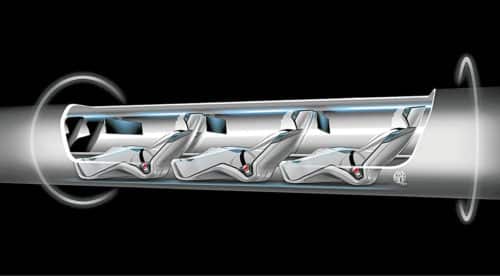
How Hyperloop Transport works
In Hyperloop transportation, custom-designed capsules or pods zip smoothly through continuous steel tubes that are held at partial vacuum. The pod that sandwiches the passenger compartment between an air compressor upfront and a battery compartment in the rear is supported by air caster skis placed at the bottom. The skis float on a thin layer of air provided under high pressure, eliminating rolling resistance and allowing pod movement at high speeds. These capsules are planned to be driverless with speeds of more than 1000kmph. Linear induction motors placed along the tube control the pod speed. Electronically-assisted acceleration and braking determines the capsule speed.
During the pod’s journey, an inlet fan and compressor push high-pressure air from the nose to tail. This action along with the partial vacuum eliminates most of the drag and boosts the speed. Low power consumption and reliance on existing infrastructure after re-engineering are the big positives. The complete system operation is designed to be automatic using extensive safety control systems with redundancy and supported by captive software.
The first Hyperloop transport system in the world is under implementation between Los Angeles and San Francisco. It will travel this distance in flat 35 minutes with a planned capacity of 840 passengers per hour. The system will transport as many as six million passengers between Los Angeles and San Francisco every year.
Increase in the demand generated due to the lower cost of travelling on Hyperloop is expected to be met by shortening the time interval between capsule departures. Due to the short travel time and frequent departures, there is expected to be a continual flow of passengers through each Hyperloop Transport station. In order to ensure safety, security checks are to be made in the traditional manner as done at airports.
All ticketing and baggage tracking for the Hyperloop Transport System will be handled electronically, thus negating the need for printed boarding passes and luggage labels. Luggage would be stowed in a separate compartment at the rear of the capsule, in a way similar to the overhead bins on passenger aircrafts. This luggage compartment will be removable from the capsule for stowing and retrieving luggage to be undertaken separately from embarking or disembarking the capsule’s passenger cabin.
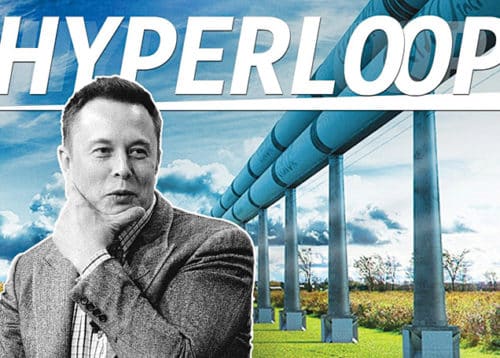
The transit area at the Hyperloop terminal would be large and open with two large airlocks signifying the entry and exit points for the capsules. An arriving capsule would enter the incoming airlock, where the pressure is equalised with the station, before being released into the transit area. The doors of the capsule would open so that passengers could disembark. The luggage pod would be quickly unloaded by the Hyperloop staff or separated from the capsule so that baggage retrieval does not interfere with the capsule turnaround.
Once vacated, the capsule will be rotated on a turntable, and aligned for re-entry into the Hyperloop tube. The departing passengers, and their pre-loaded luggage pod, would then enter the capsule. The capsule would be moved forward into the exit airlock, where the pressure is lowered to the operating level of the Hyperloop, and then sent on its way.
The role of ‘IT’ in shaping the Hyperloop
Way back in September 2013, Ansys Corporation conducted computational fluid dynamics simulations to model the aerodynamics of the capsule and shear stress forces that the capsule would need to endure. Simulation revealed that the capsule shape required considerable fine-tuning to prevent supersonic airflow. It was also inferred that the gap between the tube wall and capsule would need to be increased.<
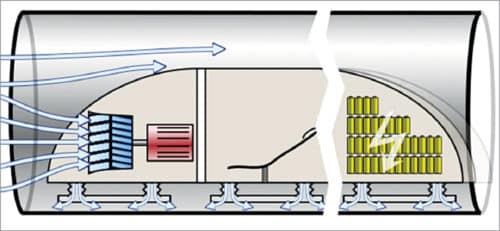 A pod would move through the tube with an air compressor on the front, passenger compartment in the middle and battery compartment at the back (Source: www.jebiga.com)[/caption]
A pod would move through the tube with an air compressor on the front, passenger compartment in the middle and battery compartment at the back (Source: www.jebiga.com)[/caption]
Later in October 2013, the development team of the OpenMDAO software framework (which serves as the backbone for subsystem integration, optimisation and workflow management) released a partially completed conceptual open source model of parts of the Hyperloop’s propulsion system. However, there were some hindrances and the model required tweaking.
In November 2013, MathWorks analysed the tweaking inputs and concluded that there was a high probability for that route to be possible. The analysis focused on the acceleration felt by passengers and the essential deviations from public roads in order to keep the accelerations within limits.
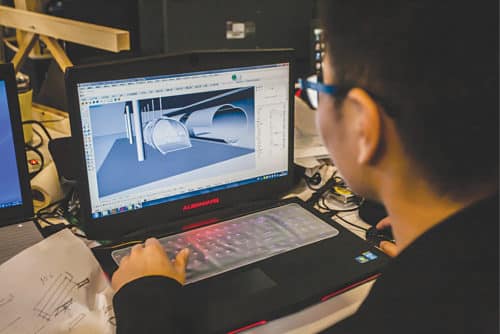
In January 2015, a paper based on the NASA OpenMDAO open source model emphasised again the need for a bigger-diameter tube and a lower cruise speed closer to Mach 0.85. It suggested doing away with the on-board heat exchangers based on thermal models of the interactions between the compressor cycle, tube and ambient environment. The fully integrated system model was constructed using OpenMDAO-a Python-based framework for design and optimisation of highly coupled systems. This work focused on the aerodynamics and thermodynamics of the passenger pod itself. OpenMDAO gave the means to manage growing model complexity in an efficient and flexible way.
The presented models were built exclusively using freely-available, open source tools. As the Hyperloop design evolved, more and more design parameters were required to be managed and optimised.
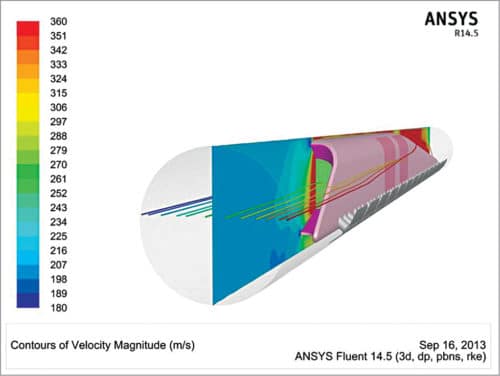
In 2015, an undergraduate Hyperloop team from the University of California (UCI) got together to compete in a chain of contests sponsored by SpaceX. UCI’s team, called HyperXite, won a technical excellence award in a design competition held in 2016, and the team had to actually build the thing in time for the January 2017 pod contest at SpaceX’s headquarters in Los Angeles.
This required a huge amount of computer modelling. Ars, a 24-core system owned by the University which limited students to 72 hours of time per project, was thought of as a facilitator. However, since HyperXite was sponsored by Microsoft (among others), the software giant led the undergraduates to a firm called Cycle Computing, which takes computing capacity from cloud services and provides its clients (which are often research teams and private firms) with software that allows them to carry out large-scale simulations in everything from risk modeling for life insurance disbursements to testing potential solar-cell materials. Cycle Computing supported the team in assembling a 128-core cluster on Microsoft Azure to maintain all the necessary data and compute workload.
For actual modeling, HyperXite deployed simulation software ANSYS running the Azure instances, wherein each had 16 Intel Xeon 2.4GHz cores and 7GB RAM per core. This massive computational power enabled the Hyperloop team to model the aerodynamics of the pod as well as the braking system.
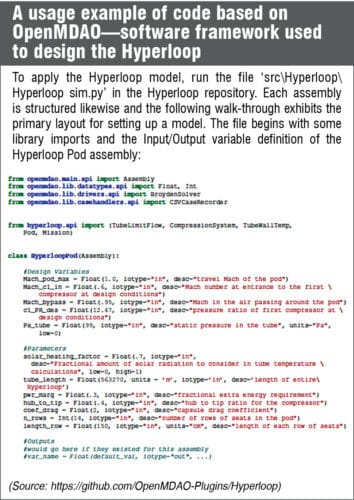
Once the design competition was over, the team concluded that the pod shape needed to be changed since the original design weighed too much. It was decided that carbon composites instead of aluminium would be used for pod shell. However, before constructing the first draft of this shell on a real pod, simulations were run to ensure that the structural integrity would not be jeopardised.
A major problem faced was that one change demanded more changes to be made. For example, changing the shell gave rise to the problem of some parts of the pod being too weak, thus making them very vulnerable to breaking upon the pod’s braking. It was only with the support of high computing capacity that the team was able to carry out iterations fast and take quick decisions-such as, which shell shapes were to be rejected. Access to the computational servers allowed larger and more accurate simulations, making it possible to complete several weeks of work in a few days.
Hyperloop in India
The Indian government has been toying with the idea of building bullet trains in the country, which is very capital-intensive. For example, the proposed bullet train project between Ahmedabad and Mumbai is estimated to cost about one trillion rupees ($15 billion).
However, Hyperloop is emerging as a much cheaper and more effective alternative. It will provide paths to leapfrog Indian transportation by providing a faster, non-disruptive, pollution-free option to move both passengers and cargo. Hyperloop fits in well with the Mission 350 Plus Initiative declared by the Ministry of Railways in August 2016.
The Mumbai-Bengaluru-Chennai corridor with future plans to include Delhi, Hyderabad and Pune is on the anvil. The concept of Hyperloop Transport System will dramatically reduce the Mumbai-to-Delhi travel time to just 90 minutes. The tube line between Mumbai and Pune, a road distance of 150km, could be covered using the existing central median, supported by pylons separated by a distance of 30.5m (100 feet).
Thus no additional land would be required to set up this project. The series of pylons supporting the tube can be built over land that is already in use for public transportation, causing minimal interference with existing facilities. This also means significantly lower construction and operation costs than with any other mass transportation system in use.
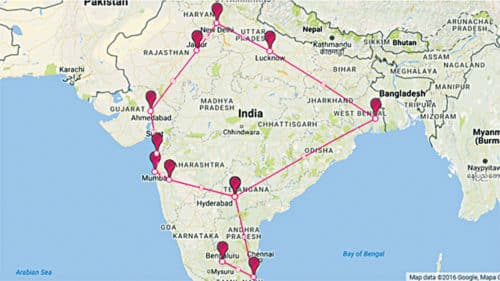
Concerns
The idea of Hyperloop Transport systems was first shared by Elon Musk in 2013. Even as Musk or SpaceX are working on the technology right now, many other companies such as Hyperloop Travel Technology (HTT) have picked up the concept and are trying to make the transportation system a reality.
The preliminary testing of the concept and design has been completed. If implemented successfully, the project, i.e., Elon Musk’s Hyperloop Transport System, will become ‘the fifth mode of transport’ and the fastest in the world. This absolutely new type of high-speed transport is likely to connect the large cities of the world much more effectively than the high-speed railroads.
Designing and implementing an ultra-high-speed transportation system needs ultra-high computing power. For example, the HyperXite team is studying the fluid dynamics of the fuselage of this new vehicle.
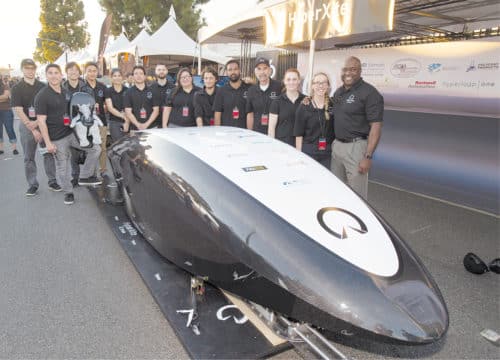
Generally, a complete simulation requires over 5000 CPU-hours. Earlier benchmarks performed by CycleCloud exhibited superb linearity with Microsoft Azure-up to and beyond 256 CPUs. This implies that executing on 256 cores completes the simulation approximately 256 times faster than on a single core.
There are some critics of Hyperloop Transport who dwell more on the experience. They speculate that perhaps it could be distasteful and terrifying to ride in a slender, sealed and windowless capsule, within a sealed steel tunnel. Besides, it would be exposed to considerably high acceleration forces, high noise levels due to air being compressed and ducted around the capsule at near-sonic speeds, and the vibration and tussle.
Even if the tube is smooth at the start of the journey, the ground could shift due to seismic activity. At such high speeds, even small deviations from a straight path could lead to significant buffeting. This is over and above issues and questions related to equipment malfunction, accidents and emergency evacuations.
Critics have also raised questions related to design technicalities in the tube system. Prof. John Hansman has highlighted the repercussions of a power blackout, especially when the pod is hundreds of kilometres away from a big city. Prof. Richard Muller has also raised fears about Hyperloop’s novelty and defenselessness of its tubes. There is a high probability that Hyperloops could be targeted by terrorists.
However, all new inventions and breakthroughs had to face their share of fears, doubts and uncertainties. Yet, all great inventions changed the way we all live, work and play, for the better.
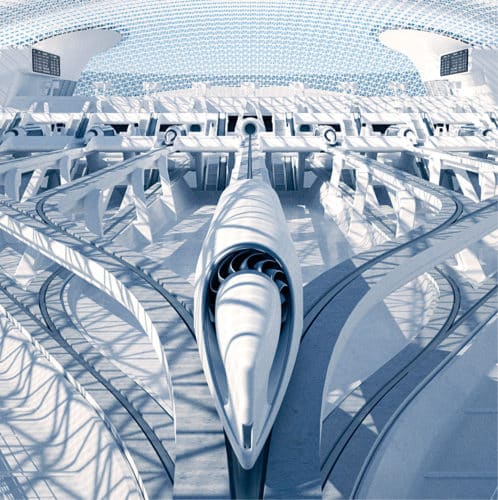
As per Elon Musk, Hyperloop is likely to prove very valuable on Mars as no tubes would be required there. Mars’ atmosphere is only about one percent of the density of the Earth’s. For the Hyperloop concept to work on the Earth, low-pressure tubes are needed to bring down air resistance. But on Mars, the considerably lower air resistance would allow a Hyperloop to be developed without a tube since just a track would be sufficient. Perhaps several generations from now, those who settle in colonies on Mars, would take the Hyperloop to work!






